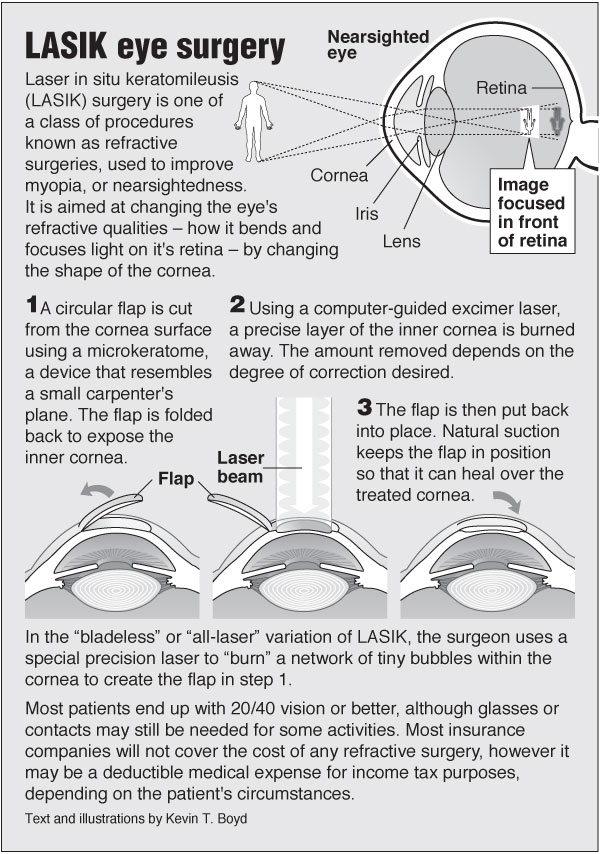Pondering Cataract Surgical Procedure? Contrast Conventional And Laser Methods To Unveil The Vital Variables That Will Form Your Vision
Pondering Cataract Surgical Procedure? Contrast Conventional And Laser Methods To Unveil The Vital Variables That Will Form Your Vision
Blog Article
Team Author-Dalsgaard Duran
When considering the choice between typical cataract surgical procedure and laser-assisted strategies, you might find yourself considering the benefits and drawbacks each technique provides. The decision goes beyond the surface area level of expense and accuracy, delving into the world of lasting end results and person fulfillment. As you browse through the intricacies of these 2 strategies, it ends up being important to comprehend the nuanced details that can considerably affect your visual quality and total experience. Keep tuned to uncover the essential aspects that will assist your decision-making process in this essential facet of eye care.
Traditional Cataract Surgical Procedure Benefits And Drawbacks
When thinking about traditional cataract surgical procedure, you might discover that it's a reputable and widely-used technique. In this treatment, a doctor makes a small cut in the eye and utilizes ultrasound to break up the gloomy lens prior to removing it. When the cataract is gotten rid of, an artificial lens is put to recover clear vision.
One of the main benefits of conventional cataract surgery is its record of success. Many people have had their vision considerably improved via this procedure. Additionally, standard surgery is often covered by insurance, making it a more easily accessible alternative for several people.
Nevertheless, there are some drawbacks to standard cataract surgery also. Recovery time can be longer contrasted to newer strategies, and there's a somewhat higher risk of issues such as infection or swelling. Some individuals might likewise experience astigmatism or call for analysis glasses post-surgery.
Laser-Assisted Techniques Advantages And Disadvantages
Checking out laser-assisted strategies for cataract surgical treatment reveals a modern-day strategy that makes use of laser modern technology to execute essential steps in the treatment. Among the key benefits of laser-assisted cataract surgical treatment is its accuracy. https://www.today.com/series/what-its-like/lasik-eye-surgery-cost-procedure-recovery-patient-guide-t135820 enables incredibly accurate incisions, which can result in far better visual end results. Additionally, the use of lasers can decrease the amount of ultrasound power needed throughout the surgical treatment, potentially lowering the threat of difficulties such as corneal damages.
On the drawback, laser-assisted strategies can be a lot more pricey compared to traditional methods. This price mightn't be covered by insurance, making it less obtainable to some clients.
Another factor to consider is that not all cataract specialists are trained in laser technology, which could limit your options for picking a cosmetic surgeon.
Lastly, while the laser can automate particular facets of the treatment, the surgical procedure still needs an experienced doctor to guarantee effective outcomes.
Relative Analysis of Both Approaches
For a detailed understanding of cataract surgery techniques, it's important to conduct a relative evaluation of both standard and laser-assisted approaches.
Traditional cataract surgical treatment entails hands-on cuts and the use of handheld devices to separate and get rid of the over cast lens.
On the other hand, laser-assisted cataract surgery utilizes advanced technology to produce exact lacerations and separate the cataract with laser energy prior to removing it.
In regards to precision, laser-assisted techniques use a higher level of precision contrasted to traditional techniques. Making use of lasers allows for personalization of the treatment based on each client's eye makeup, potentially causing far better visual end results.
However, laser-assisted cataract surgical procedure often tends to be extra pricey than typical surgical treatment, which may restrict accessibility for some clients.
While both techniques work in recovering vision impaired by cataracts, the option in between conventional and laser-assisted methods typically relies on factors such as cost, precision, and specific patient demands.
Consulting with your ophthalmologist can help determine one of the most appropriate technique for your cataract surgical procedure.
Conclusion
To conclude, when choosing in between traditional cataract surgery and laser-assisted techniques, think about factors like cost, precision, and private needs. Typical surgery provides a tried and tested track record and insurance policy coverage but might come with longer recuperation times. Laser-assisted strategies offer higher precision and customization but can be a lot more expensive and not constantly covered by insurance coverage. Inevitably, does lasik surgery affect cataract surgery in between both techniques depends upon what is most important to you and your certain scenario.
